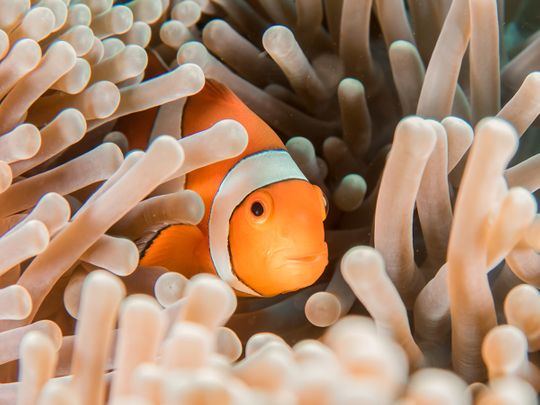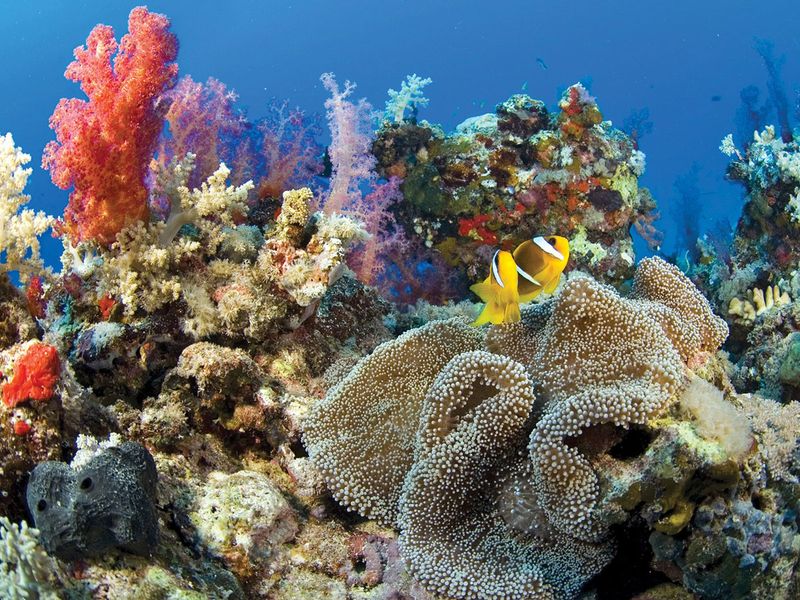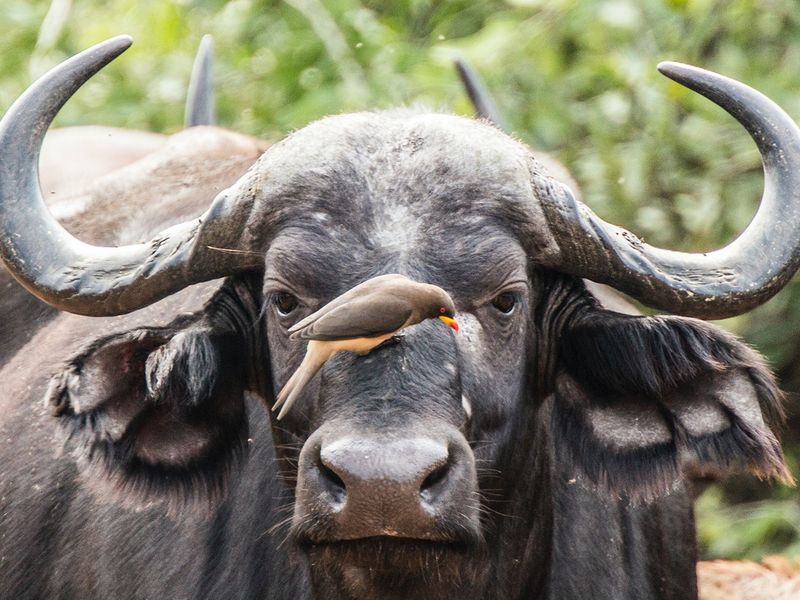
Nature is an excellent teacher, especially when it displays examples of mutualism – a remarkable phenomenon when different species come together, form unexpectedly close bonds, and work to their mutual benefit.
Click start to play today’s Spell It, where we explore how an unlikely animal ‘ally’ can make all the difference.
In some cases of mutualism, species are entirely dependent on each other, and in others, they can easily survive without the other, but prefer to stick together for the mutual benefits they receive. Here are a few examples that are amazing to see:
1. Coral and algae

Corals may look like rocks or plants, but they’re living things. And they get their bright colours from the zooxanthellae algae that exist in their environment. As corals grow, they provide shelter and nutrients for the algae to use during photosynthesis. In return, the zooxanthellae release oxygen into the water and produce synthesised sugars, which corals feed on. But with pollution and overheating, corals are forced to expel their algae, which is why they become bleached white. Existing for too long without their algae can be fatal to the coral, since they don’t receive the food particles they need.
2. Honeyguides and humans
As one of the best documented relationships, the human-honeyguide bond flourishes because of a shared goal: honey. Bee nests are a source of eggs, larvae and beeswax for greater honeyguides, but they prefer to let humans do the hard work, and help instead, by leading them to the nests. Wild honeyguides in Tanazia, for instance, are known to emit a particular call when they have found a bee nest. The Hazda people, who have been honey hunters for centuries, have mastered response calls and know just how to follow the birds to the source. They then release smoke at the nest, to subdue the bees, and help themselves to the rich honey within. Once they leave, the honeyguides are free to dine on the beeswax, eggs and larvae left behind. It’s a win-win situation!
3. Oxpeckers and large animals

Whether it’s the red-billed or yellow-billed oxpecker, you’ll likely find these species piggy-backing on large grazing animals, like zebras, rhinos and wildebeest. The birds are known to pick at parasites, including ticks and blood-sucking flies, on the animals’ bodies. The benefits are clear to see – the large animals feel some relief, while the birds get an easy meal. Oxpeckers also help by raising the alarm if they spy danger before their hosts. For instance, the birds have been known to help rhinos, which are short-sighted, evade humans.
4. Clownfish and anemones
If you’ve gone snorkelling in places like the Maldives, or even watching Finding Nemo, you’ve likely seen cute little clownfish peeking through waving finger-like anemone. But don’t be fooled. Anemones are flower-like marine animals that have tentacles that are filled with neurotoxins. They use them to subdue prey, such as plankton, fish and crabs. Clownfish, however, are immune to their stings, and can safely nestle into their tentacles to hide from predators. In return, they keep anemones free from parasites, and their faeces provides them with nutrients. The movement of the clownfish is also thought to circulate the water, and help oxygenate the anemone. Anemones that serve as homes to clownfish have faster growth rates, and lower mortality rates than those without fish, according to the UK-based Natural History Museum’s website.
What do you think of these relationships? Play today’s Spell It and tell us at games@gulfnews.com.








